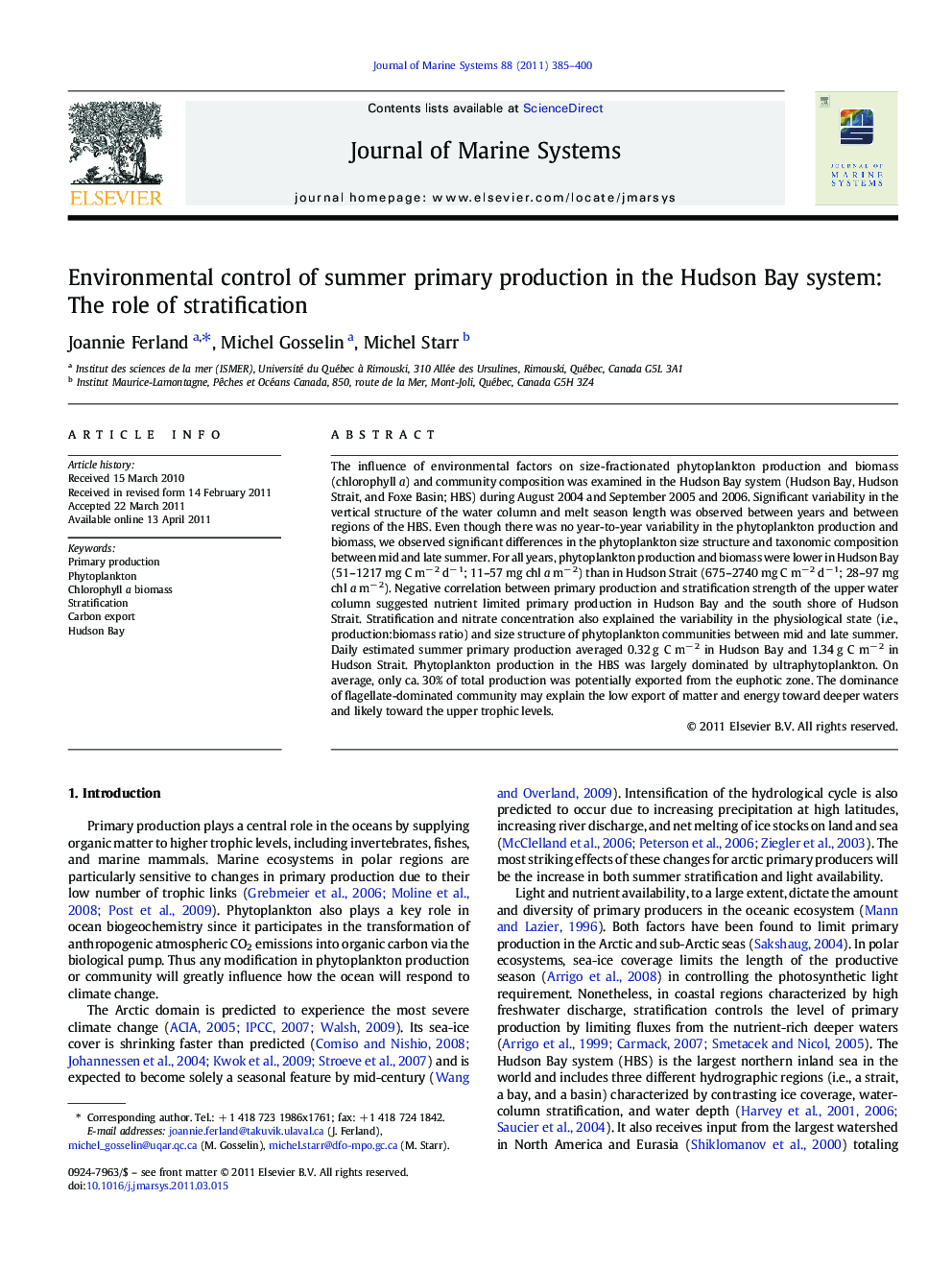| Article ID | Journal | Published Year | Pages | File Type |
|---|---|---|---|---|
| 4548345 | Journal of Marine Systems | 2011 | 16 Pages |
The influence of environmental factors on size-fractionated phytoplankton production and biomass (chlorophyll a) and community composition was examined in the Hudson Bay system (Hudson Bay, Hudson Strait, and Foxe Basin; HBS) during August 2004 and September 2005 and 2006. Significant variability in the vertical structure of the water column and melt season length was observed between years and between regions of the HBS. Even though there was no year-to-year variability in the phytoplankton production and biomass, we observed significant differences in the phytoplankton size structure and taxonomic composition between mid and late summer. For all years, phytoplankton production and biomass were lower in Hudson Bay (51–1217 mg C m− 2 d− 1; 11–57 mg chl a m− 2) than in Hudson Strait (675–2740 mg C m− 2 d− 1; 28–97 mg chl a m− 2). Negative correlation between primary production and stratification strength of the upper water column suggested nutrient limited primary production in Hudson Bay and the south shore of Hudson Strait. Stratification and nitrate concentration also explained the variability in the physiological state (i.e., production:biomass ratio) and size structure of phytoplankton communities between mid and late summer. Daily estimated summer primary production averaged 0.32 g C m− 2 in Hudson Bay and 1.34 g C m− 2 in Hudson Strait. Phytoplankton production in the HBS was largely dominated by ultraphytoplankton. On average, only ca. 30% of total production was potentially exported from the euphotic zone. The dominance of flagellate-dominated community may explain the low export of matter and energy toward deeper waters and likely toward the upper trophic levels.
Research highlights► Spatio-temporal variability of summer primary production (PP) in Hudson Bay system. ► Hudson Bay surface waters are highly stratified compared to Hudson Strait. ► Production rates are four times lower in Hudson Bay than in Hudson Strait. ► Algal carbon is mainly retained in the euphotic zone rather than exported to depth. ► About 30% of PP is potentially exported out of the euphotic zone.
